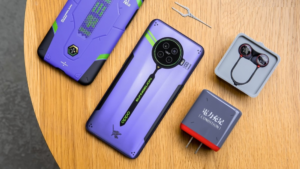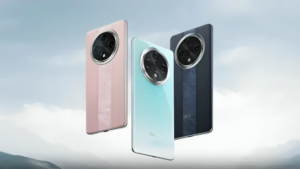
The Xiaomi Redmi Note 13 Pro Plus 5G is available on amazon.in for Rs. 30,999 in India. Available in Fusion White, Fusion Purple, and Fusion Black colors, this is the Xiaomi Redmi Note 13 Pro Plus 5G base edition with 8 GB RAM and 256 GB internal storage.
Redmi Note 13 Pro Plus Overview
| Xiaomi Redmi Note 13 Pro Plus 5G | |
|---|---|
| RAM | 8 GB |
| Processor | MediaTek Dimensity 7200 Ultra |
| Rear Camera | 200 MP + 8 MP + 2 MP |
| Front Camera | 16 MP |
| Battery | 5000 mAh |
| Display | 6.67 inches (16.94 cm) |
Verdict
The Redmi Note 13 Pro+ pushes the envelope by providing certain flagship-caliber features—like 512GB of storage and Corning Gorilla Glass Victus—for less than Rs 36K. I also like that it has some clever design and camera advancements. Although the guarantee of three years of Android OS is commendable, I believe the UI might use some work.

A native generative AI function, which the majority of phones in this market lack, is something else I am waiting for. Last but not least, the prices may have been more reasonable.
Redmi Note 13 Pro Plus Display and design
There are three color options for the Redmi Note 13 Pro+. Fusion White and solid Fusion Black are your options if you prefer muted colors. I’m reviewing a recently released Fusion Purple version. It has some white, blue, and green tones surrounding the cameras, which I think is classy and distinctive.
Although it might be difficult to clean and maintain over time, the leather back adds a sophisticated touch to the subdued tones. To fix this, Xiaomi has sent a replacement black case with the delivery. It gives a bit of thickness to the otherwise smooth design in addition to acting as a protective covering. This case is far more attractive in my opinion than the standard clear case that many Android smartphones in India come with.
In general, the Redmi Note phone’s curved display, which is a first, looks and feels luxurious when paired with the leather back. The absence of a headphone jack is the price for this inclusion, though. The remaining ports and buttons on the sides, top, and bottom (SIM tray, power button, etc.) are still the same. Additionally, if your fingers are dry and not sweaty, the in-display fingerprint scanner is reasonably responsive.

One of the best things about the Redmi Note 13 Pro+ is that, as previously noted, it has an IP68 classification for improved dust and water protection. Furthermore, if extra durability is important to you, the display with Corning Gorilla Glass Victus protection is the best option.
Speaking of the display, with a peak brightness of 1800 nits and 1.5K resolution (2,712 x 1,220 pixels), the 6.67-inch AMOLED screen provides a crisp visual experience. For a more engaging movie-watching experience, HDR10+ and Dolby Vision are also supported. Keeping a high PWM dimming to 1,920Hz for less screen flicker, Xiaomi is following in the footsteps of its rivals. For fluid scrolling and gaming, the display additionally has a refresh rate of 120 Hz.
Redmi Note 13 Pro Plus Performance
When it comes to smartphone memory configurations, the Redmi Note 13 Pro+ sets the right example as 2024 approaches. The base model now comes with 256GB of storage. With 12GB of LPPDR5 RAM and 512GB of UFS 3.1 storage, the highest variant (Rs 35,999) is available. With 256GB of storage and 12GB of RAM, the one I’m examining costs Rs 33,999.
The Redmi Note 13 Pro+ performed dependably during my review, showing no symptoms of overheating or unexpected program breakdowns. While switching between programs, there may occasionally be stutters or some apps that take an abnormally long time to load, although these are minor problems. You may find it annoying since there are so many pre-installed apps, which slightly clog the software interface. The Android 14 upgrade for Xiaomi’s mid-range devices has also been delayed, which is a problem that has to be fixed right away.
Three years of Android updates are promised, the next of which will be the new HyperOS Android skin, for the Redmi Note 13 Pro+, at least. Additionally, NFC compatibility is available to facilitate easy digital payments. In addition, there is the beloved infrared blaster that allows you to control your TV and air conditioner from your smartphone. I was receiving around 200Mbps at home in Delhi with an Airtel 5G Plus SIM card. However, coverage affects internet speed variations.
In terms of pure benchmarks, the Redmi Note 13 Pro+ outperforms the Redmi Note 12 Pro+ and achieves respectable results on Geekbench 6 and AnTuTu. This is due to the MediaTek Dimensity 7200 Ultra SoC.

In real life, the OnePlus Nord 3 and Redmi Note 13 Pro+ are virtually identical when compared side by side. For example, the Redmi Note 13 Pro+ has faster app launches and boots. The Nord 3 has slightly superior gaming performance, though. Apart from the pre-installed apps, I think MIUI is a better option overall than OxygenOS. Given that the Redmi Note 13 Pro+ offers significantly more storage for the same price as the Nord 3, it might ultimately come down to personal preference.
Redmi Note 13 Pro Plus Cameras
The Redmi Note 13 Pro+ has an improved 200MP primary camera, but Xiaomi’s mid-range model does not (yet) have a Leica alliance. For example, it now has an ISOCELL HP3 sensor (instead of the previous ISOCELL HPX sensor), which records more light and better details. Thus, images taken in 200MP mode have less noise, more readable text from a distance, and crisper details when you zoom in. When you click images in this mode, the file size naturally grows as well.
Compared to the Redmi Note 12 Pro+ and a few of its direct competitors, the Redmi Note 13 Pro+ typically performs better in standard mode. In various lighting scenarios, I can see enhanced dynamic range, noise reduction, and color balance.

The phone performs an adequate job of balancing colors in bright lighting, although occasionally you may detect overexposed areas that the software is unable to reduce. Sometimes the saturation is a little too high, but generally, it’s a wonderful thing. With superb edge detection, portrait photos appear incredibly natural. 4K30 frames per second can be recorded in videos taken using the primary camera. Furthermore, compared to the Redmi Note 12 Pro+, there has been a discernible improvement in stabilization.
While details remain subpar, the 8MP ultra-wide camera also shows some improvement. A large number of the images in my tests have strong contrast, which accentuates the shadows. In addition, this conceals background details. The 2MP camera continues to be largely disappointing because it is unable to identify the subject in both dark and light environments.
You will typically also notice minor color inconsistencies with the other two camera sensors in low light.
Redmi Note 13 Pro Plus Battery
With support for 120W charging, the Redmi Note 13 Pro+ has a 5,000mAh battery. The phone charges completely in around 30 minutes with the included charger, which is good considering top devices like Samsung, Apple, and Google can only handle charging at 30 or 45 watts. Battery backup is also quite good.
With just one charge, I could easily use the Redmi Note 13 Pro+ all day. Remember that this was done with 5G (sometimes switching to Wi-Fi), balanced mode activated, 120Hz frame rate, and AOD (always-on display). You might need to do another round of charging if you activate performance mode, but the 120W charger that comes with the device should work just fine.
Pros & Cons
Pros:
- Trendy design
- Crisp display
- Fast charging
- 200MP camera
Cons:
- Loads of pre-installed apps
- Inconsistent lowlight photography
What camera upgrades does the Redmi Note 13 Pro+ offer compared to its predecessors?
The Redmi Note 13 Pro+ boasts an upgraded 200MP primary camera, capturing sharper details and improved dynamic range. Additionally, improvements in stabilization enhance video quality.
Is the software experience of the Redmi Note 13 Pro+ smooth and clutter-free?
While the Redmi Note 13 Pro+ promises three years of Android updates, some users may find the software experience cluttered due to pre-installed apps. Further improvements to UI and software performance are desired.
Does the Redmi Note 13 Pro+ support high-speed internet connectivity?
Yes, with support for 5G connectivity and NFC, the Redmi Note 13 Pro+ enables seamless digital payments and high-speed internet access, enhancing its overall connectivity capabilities.
How does the Redmi Note 13 Pro+ compare to its competitors like the OnePlus Nord 3?
While the Redmi Note 13 Pro+ competes closely with the OnePlus Nord 3, offering comparable performance and features, its value proposition lies in premium features like 120W fast charging and IP68 rating.
What are the areas where Xiaomi can improve the Redmi Note 13 Pro+ in future iterations?
Xiaomi could focus on refining the software experience, reducing clutter, and possibly eliminating some pre-installed apps. Additionally, integrating native generative AI features and enhancing overall UI smoothness would be beneficial for users.
You Might Also Like: OnePlus Nord CE 4 vs Nothing Phone 2a: Price in India, Specification, Design



